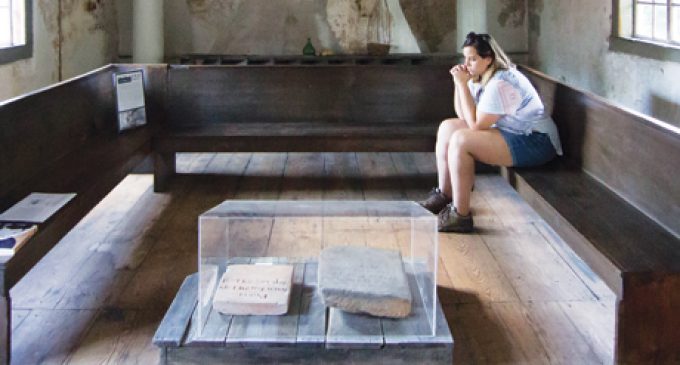Old Salem is continuing the conversation
Photos by Alphonso Abbott Jr.- A Salem Tavern room where slaves used to stay.

This is the last of a three-part series.
Over the past two weeks, we’ve traveled through time, unveiling the lives of blacks in the town of Salem during the 18th, 19th and early 20th centuries.
As we continue our journey this week, we will take a closer look at the development of two of the city’s most historic neighborhoods: Happy Hill, and the East Winston community. Although these neighborhoods didn’t reach their peaks until the mid-1950s, the foundation was laid years earlier by the men and women who lived in the shadows of Hidden Town.
As mentioned in Part Two of the Hidden Town series, the roots of Happy Hill date back to the early 19th century when Dr. Friedrich Heinrich Schumann moved to Salem from nearby Bethania to serve as the town’s doctor. Although Dr. Schumann freed his slaves in 1836, the remnants of Hidden Town and the slaves who called Liberia home will remain in the area for generations to come.
1950-2000
By the mid-1950s, African-Americans in Winston-Salem had made tremendous strides socially, economically and politically in the town of Salem, although most blacks still lived on the outskirts of the city. Hill’s Winston-Salem Directory for 1951 shows more than 500 black households on the outskirts of the city.
Around the same time, the city began construction on the city’s first public housing project, Happy Hill Gardens, on the same land that had been set aside for blacks more than 100 years earlier. While Happy Hill continued to thrive, the East Winston community continued to grow as a significant black neighborhood as well. Complete with its own hospital, grocery stores, libraries and everything else a community needs to survive, East Winston in the 1950s is a prime example of “black excellence.” Black doctors, black lawyers, black teachers and black business owners all called East Winston home during this time.
The construction of Highway 52 matched with the impact of Interstate 40 in the 1960s devastated Happy Hill and East Winston. Just as Salem Creek was used as a tool to keep blacks out of Salem, the highway unintentionally did the same to East Winston and Happy Hill, and the city has yet to fully recover.
Continuing the conversation
On Thursday, Aug. 17, Old Salem Inc. held an event to announce the establishment of the Hidden Town Project. Although a lot of information has been discovered on the lives of slaves and free blacks who lived in the town of Salem, members of the Hidden Town Committee said the work has just begun.
Since December 2016, the committee has reviewed approximately 5,200 photos, gathered more than 4,000 documents from the MESDA Craftsman Database, and examined more than 1 million pages of original documentation. Old Salem President and CEO Frank Vagnone said, “Unfortunately we will all probably be dead when this project is complete because it’s so intensive, and so deep and so important.”
Vagnone, who also serves as co-chair of the Hidden Town Project, said the committee is committed to studying the narrative of African-Americans in Salem. He noted, while pinpointing spots where slaves like Christian David and others lived, discovering the slave quarters inside the Salem Tavern and unveiling graves underneath St. Phillips Heritage Center are significant findings for the Hidden Town Project, there is so much more to learn.
“We’re really just stewards of this narrative. We’re committed to working with our collaborators on finding the answers, the stories, the people and the descendants,” said Vagnone. “When fourth-graders by the thousands come down Main Street, our goal is that they learn about all the people in the town. That’s our main goal with Hidden Town.”
Vagnone said as the story grows, the committee will grow. He said eventually the committee will look to include descendants and other stakeholders. He said it is important that the community is involved throughout the process.
“This is certainly not a finite place we’re at now. You will hear more about membership of this committee and how this information gets integrated into our historic narrative at Old Salem.”
If anyone has any information, pictures, stories, or ideas to add to the Hidden Town Project, or for more information on the Hidden Town Project, contact the committee by email at hiddentown@oldsalem.org.











